Date modified: 2024-08-14
Share this page:
Learn about the GeoAI Series, the foundational geospatial data created using Artificial Intelligence (AI).
The GeoAI Series is a collection of geographic features that are:
Please note that due to the nature of the extraction process, most features carry minimal amount of information and will have had only a summary validation and correction process prior to being published.
One of GeoAI’s main benefits is the ability to create map layers representing snapshots of how a given geographic location looked at differing points in time. This results in an easy way to view and analyze the effects landscape-altering phenomena. The ability to identify trends and changes over time provides a wealth of opportunities to data users.
The typical mapping processes of strict attribution, validation, and corrections are challenging for the continued maintenance of foundational datasets. Introducing the GeoAI solution!
By training and using AI to identify specific features in high-resolution images, most of the mapping process has been automated and is much more efficient. Compared to human digitization techniques, the GeoAI system is over 1000 times faster!
While the results are not always as accurate as results from manual techniques, the efficiency gained enables the ongoing creation of massive amounts of data and opens the door to a wealth of new applications.
Classify different land use types, such as forested areas, waterbodies, buildings, roads, etc. Being able to interpret these classes automatically can tremendously speed up the process, and accuracy, of creating base layers.
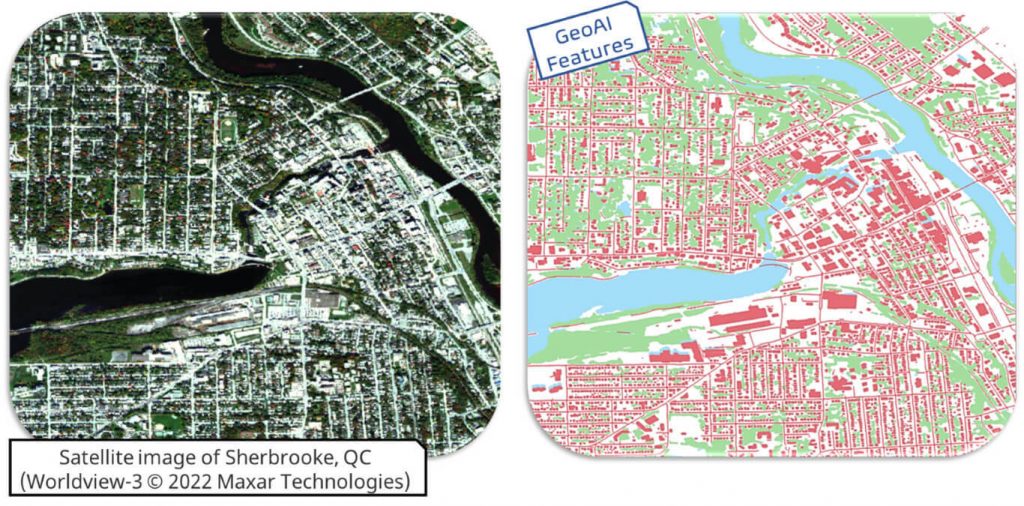
Detect and monitor changes in geospatial data over time. For example, changes in land use due to development, damage to infrastructure after a flood event, or reductions of vegetation coverage after a wildfire.
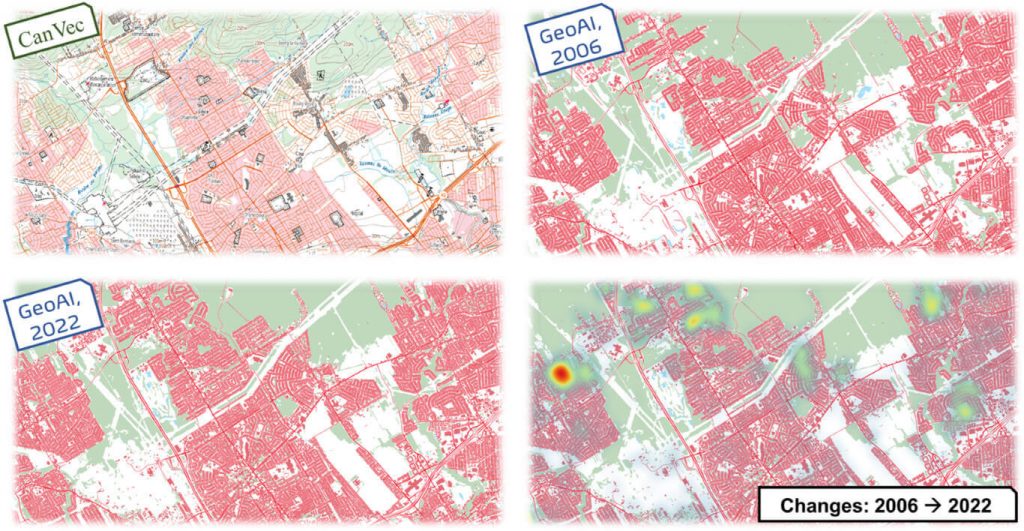
The provided example highlights first the difference between a typical mapping product, such as CanVec, and GeoAI, along with an analysis of urban development for Quebec City between 2006 and 2022 with a hotspot analysis on differences of detected buildings between the two dates from the GeoAI Series.
By providing raw map layers freely and openly, GeoAI features can be leveraged and integrated in projects aimed at the development of analysis-ready datasets. These datasets go through additional manual adjustments, attribution, quality control, and assurance processes. Furthermore, GeoAI features generated from recent source datasets can help identify areas in need of updates so that data providers can focus their efforts in areas of higher impact.
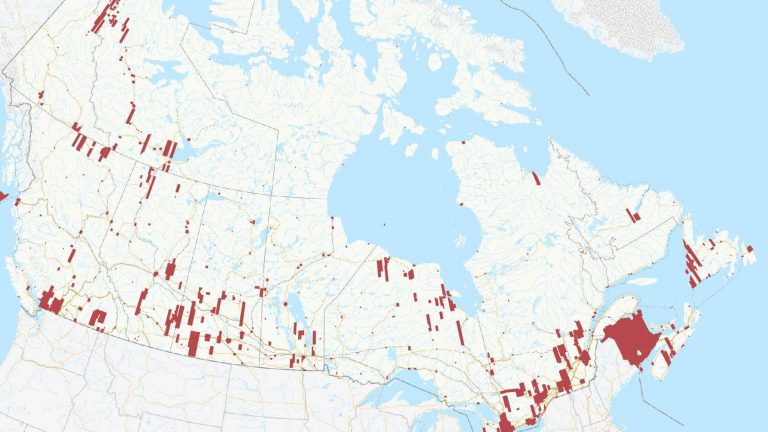
Find areas that currently have GeoAI coverage and download the data.
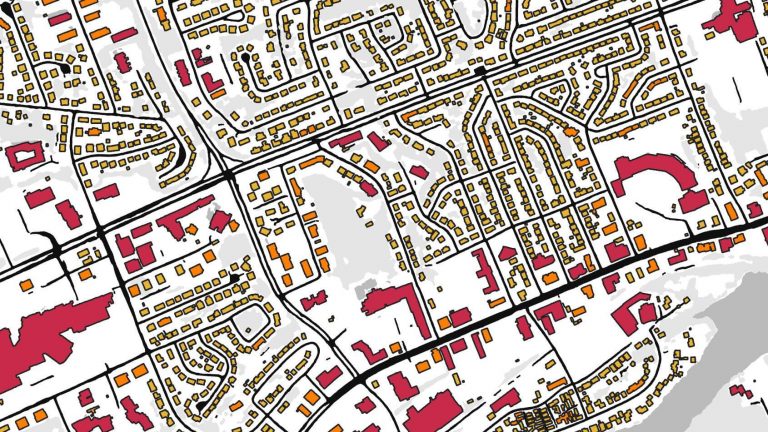
Access the GeoAI metadata and download the available datasets.
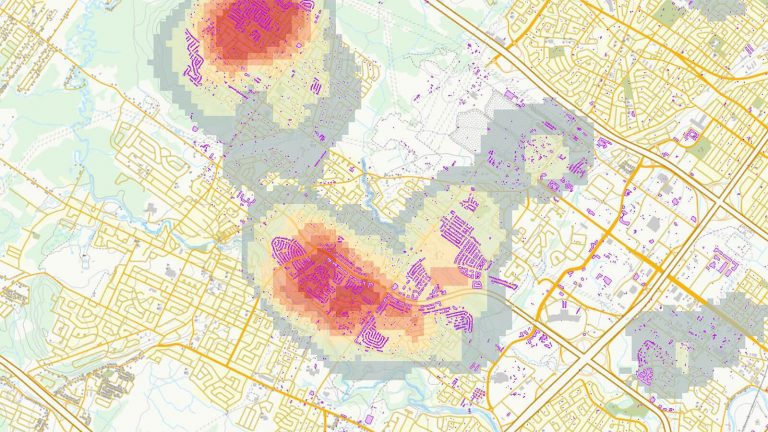
Explore the results of a change detection analysis in Québec City.
GeoAI is a fledgling data series. The development team has put a lot of time and effort in to building the foundations the GeoAI series, but that’s just the first step; we have even more room to grow and develop the project into something truly cutting edge!
Firstly, we are looking to establish more collaboration to accelerate data creation from both current and historical sources. Secondly, we will continue working on improving the modelling and post process aspects of GeoAI to provide higher quality features. Check back regularly to keep informed on the latest updates and announcements about GeoAI.
Email geoinfo@nrcan-rncan.gc.ca and get in touch with our team.
Since 2019, the Canada Centre for Mapping and Earth Observation (CCMEO) has invested significant strategic efforts in developing cloud-based geospatial data management systems and advanced AI.
These efforts led to the launch and open distribution of the Geo-Deep-Learning project (access the geo-deep-learning github), aimed at enabling the use of Convolution Neural Networks (CNN) with georeferenced datasets.
Natural Resources Canada later implemented image pre-processing and geo-deep-learning tools in an operational pipeline which is used to automatically process very large quantities of aerial or satellite optical imagery (the use of other data sources is currently in development) to extract foundational geospatial features.
To test out the systems, validate the results, develop the dataset structure, and highlight use cases, various pilot projects were carried out under the leadership of the Canadian Council on Geomatics (CCOG). Following the completion of these pilot projects, the series was formally approved by the CCOG as a GeoBase Initiative data series.
Share this page:
Canada Centre for Mapping and Earth Observation
Natural Resources Canada
Government of Canada
geo@nrcan-rncan.gc.ca

Terms and Conditions
Powered by GEO.ca, Copyright © 2024